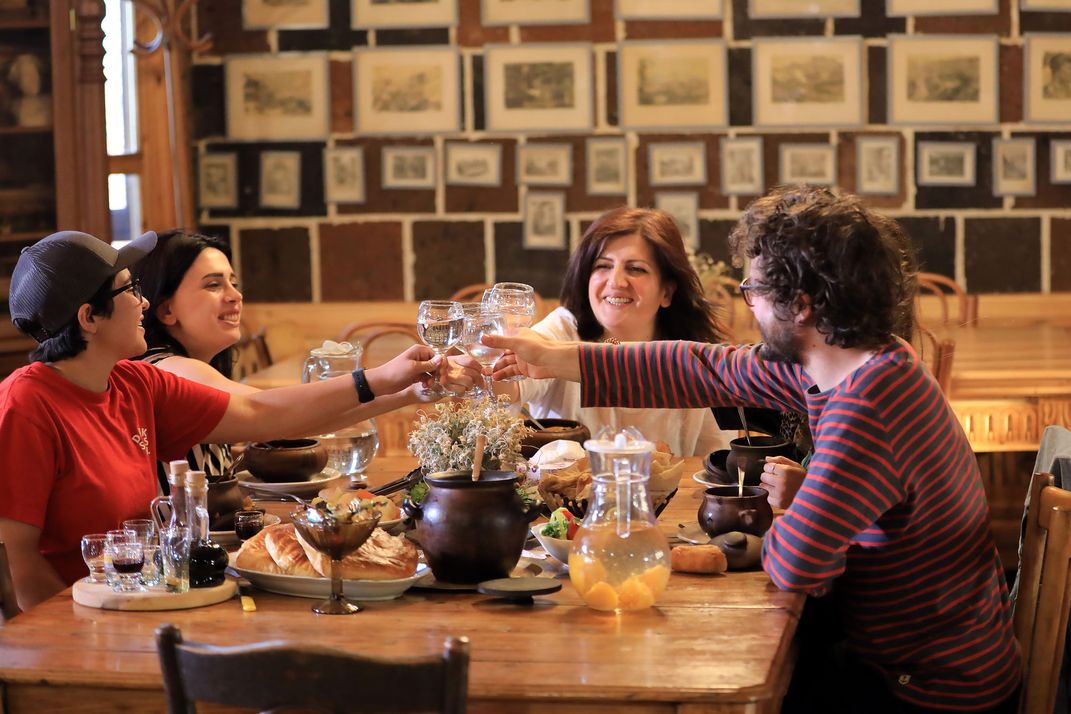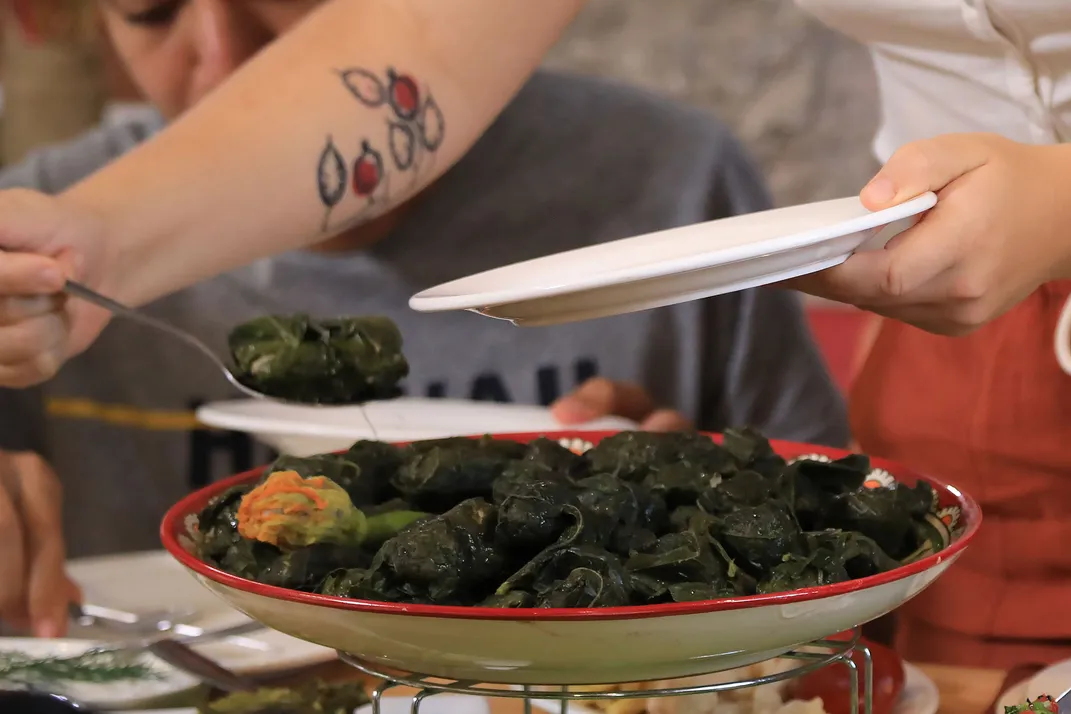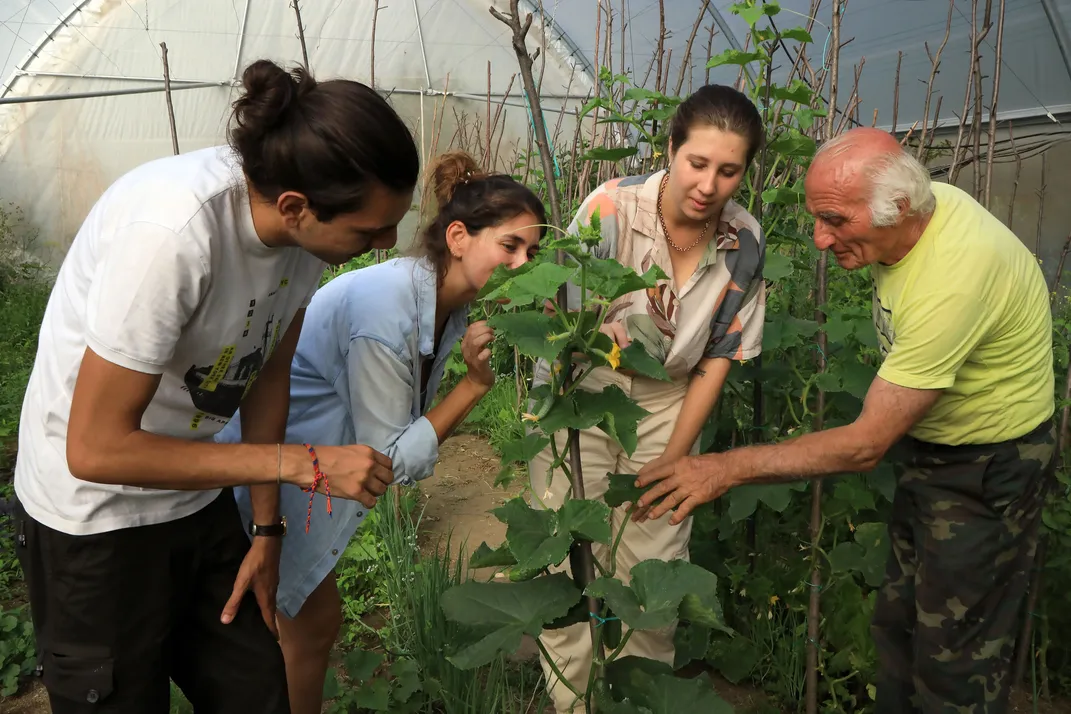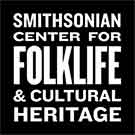SMITHSONIAN CENTER FOR FOLKLIFE & CULTURAL HERITAGE
Eat Like an Armenian with These Tips from a Local Guide
Did you know that Armenian culture is heavily gastro-centric? Any occasion, be it happy or sad, has associations with food.
:focal(1000x666:1001x667)/https://tf-cmsv2-smithsonianmag-media.s3.amazonaws.com/blogging/featured/Preparing-klulik-Web.jpg)
It is no secret that food is one of the driving forces of international tourism and that Armenia’s national menu appeals to both foreign and domestic tourists. Margarit Mirzoyan from Yerevan Magazine reports on her conversations with ethnographer Rouzanna Tsaturyan and the My Armenia Program’s product development specialist Narine Abgaryan, who currently work on the development and reconceptualization of gastro-tourism.
The Flavor of the History
I place the cast-iron frying pan on the gas flame. A few minutes later, when the pan is hot, I add a piece of butter. I cautiously touch the juicy tomato with the knife so as to soften it, and then I peel and chop it.
When the butter starts to sizzle, I add the chopped tomato, gently mixing the contents of the pan. When the tomato is about to reach the desired color, I break two eggs and whisk them, adding salt and black pepper. The whisking sound of the fork and the flavor of the frying tomato permeate the house, creating a typical morning vibe. When the tomato becomes darker, I add the whisked eggs and just a pinch of sugar (don’t overdo it). I stir the omelet until it thickens and add another pinch of salt and pepper, then turn off the gas. I put the frying pan on a wooden board and take it to the balcony, where I serve the dish with fresh matnakash (Armenian leavened bread) and a bit of goat cheese.

Any dish—even the simplest omelet with tomatoes—has a long history before it appears on our tables. Some people care only for the taste, smell, and perhaps also the visual aesthetics of a dish. And some people want to learn about the culture of food as simple as bread with cheese or the omelet that I make every morning. Ethnographers study this by exploring the history and characters behind each dish.
Rouzanna Tsaturyan believes that people use food to speak about anything—be it politics, gender issues, history, societal changes, revolution, or even fashion. Food is the crossline that unites everyone or that entices foreigners to appreciate other cultures. Tsaturyan explains, “today, when the term ‘traveling’ has become more widespread than ‘tourism,’ we focus on the interaction of cultures instead of simply passing by what we see.” She adds, “it is vital to touch the pulse of those cultures, and food is the best mediator for that. It enables us to enter a different reality and understand the people, the society, and the community around us.”
Traditional Armenian
Armenian culture is gastro-centric. Any occasion, be it happy or sad, has associations with food. Accordingly, the My Armenia Program (MAP), which is actively developing cultural tourism in Armenia, has been trying to position traditional Armenian cuisine as a popular tourist attraction and Armenia as a gastro destination.
Many MAP experiences present the historic and cultural heritage typical of a given location and use local residents to provide the experience and to prepare the dish in their own distinctive way—even if it is traditional Armenian tolma, lavash or barbeque. For instance, one family in Goris makes tolma, but with Goris bean leaves. Visitors to their restaurant (which is called Loby Goris, translated as Bean Goris), may experience not only the preparation and tasting of tolma but also a greater understanding of beans and their cultural significance in the local community.

Another example is the Hatsatun family restaurant in Sisian where everything is made and served in clay vessels from the owners’ workshop. A clay pot containing layers of pilaf with emmer wheat, along with potatoes and tomatoes from Sisian, goes into the very same oven where the owners make their clay pots.
As Narine Abgaryan explains, “Armenians have been cooking delicious food for centuries but this everyday practice in itself has not made Armenia a popular gastro destination so far. People often do not even realize that their everyday meal can be interesting to the tourists, even though it has profound historic and cultural roots.” In these MAP experiences, local people maintain their daily activities. The only difference is that tourists also join them.
Research-Based
The My Armenia Program conducts extensive research on the cultural heritage of each experience, exploring it from the perspectives of both tourism and ethnography. Historical sources prior to the 19th century are scarce, but ethnographers conduct detailed oral-history interviews to understand the history of the featured dish from multiple angles: pan-Armenian, regional, local, and finally personal. For the latter, ethnographers seek stories of both the dish and its maker, noting variations in the recipe. This enables MAP to present the experience to tourists in ways that are both rich and comprehensive.
MAP pays particular attention to crossroads of the old and the new. For instance, two young women who moved to the village of Ashnak cook dishes that are typical of Sasoun, but they add almonds, thereby contributing to a meal that has a history of centuries. “We strive to form a new approach to Armenian tourism, considering cultural heritage as the foundation,” Abgaryan observes.

The Single Right Question
Ethnographers divide what we now call Armenian cuisine into two distinct branches: Western Armenian and Eastern Armenian. Further subdivisions are by region and province. Due to historical events, particularly the Armenian Genocide that forced many Armenians to leave their original homes, Armenian culture and cuisine spread throughout the world. For the Armenian Diaspora, traditional cuisine was one very important way to preserve Armenian cultural identity. On the other hand, when Eastern Armenia became part of the Soviet Union, it diverged from Armenian Diaspora communities worldwide. Soviet dishes— such as packaged pasta, canned food, Russian borsch, or Soviet style hamburgers—became the new staples of Eastern Armenia.
Rouzanna Tsaturyan believes that a single to-the-point question about this or that dish may shed light on the history of Armenia and its past transformations. For instance, asking about the shape of bread in the Aghavnavank community of Tavush may yield memories and stories of forced displacement and resettlement in the new place. In this way, ethnographers learn about traditional cuisine and how it changed during the planned economy of the Soviet Union.

Gastro-tourism Highlights from My Armenia:
- Hotel Mirhav | tolma, pakhlava (type of pastry, also known as baklava)
- National Aesthetic Center, Gyumri | tatar boraki, pokhindz
- Under the Walnut | gata
- Yeghevnut Hotel | flour porridge, tan
- Aghavnatun | bread and barbecue of Aghavnavank made in the Tavush tonir
- Ar Areni | the lifecycle of grapes—from the vineyard to the kitchen and wine cellar
- Chalet Gyumri | Gyumri chanakh
- Hatsatun by Sisian Ceramics | Sisian qyalagyosh—traditional dish with buttermilk—and emmer wheat pilaf
- IRIS Guesthouse | ghapama and local bread baked in the traditional oven
- Legend Guesthouse | tonir gata
- Loby Goris | Goris tolma with bean leaves
- Mtnadzor Restaurant | fish kapama
- Noosh Guesthouse | Sasoun traditional klulik and signature nushello
- Old Ashtarak | Syrian-Armenian cuisine: ishli kyufta and layered pastry
- Old Martiros Guesthouse | soup with karshm and buried cheese
- Sona Guesthouse | collection and preparation of herbs, mushrooms, and berries
- Tatoents Qotuk | sweet sujukh and Armenian pickles
- Vanki Tak Wild Gastro | asparagus and fish in wild nature
In the summer of 2020, the Center for Folklife and Cultural Heritage’s My Armenia Program partnered with Armenian publication Yerevan Magazine to publish a special issue highlighting community-based cultural heritage tourism in the country. Over the next few months, the Center will publish English translations of the articles to Smithsonian Voices.
During this difficult time in the region, we hope these stories shine a light on the resilience of the Armenian people by showcasing their vibrant, diverse cultural heritage.
